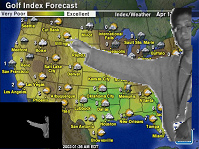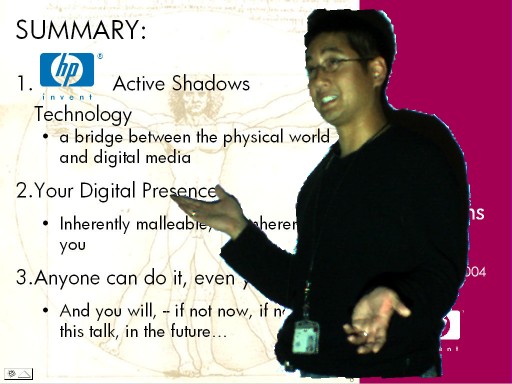|
Collaboration is essential aspect of rich media creation
where many different talents from different sources can be fused
together for a single purpose. To have such varied individual
working together, we need to have a way of transporting their work
and the presence in their work over the network. For this
purpose, we invented the Active Shadows algorithm that produces a
digital shadow of a real person that becomes their
"digital" representation and integrate their presence into
rich media communications.
The Active Shadows algorithm produces low latency (under 200ms) and high quality video object segmentation of a person,
occluding a computer-controlled display of any type (LCD, projector, CRT,
plasma) in front of video camera device. This algorithm sets up a causal video
feedback loop that can resolve ambiguous visual occlusions by adaptively
modifying the displayed image in real-time. These real-time modifications
to the display manifest themselves as if the camera were a virtual light
source and was casting a reverse shadow onto the display. Active Shadows gives the same output as a chromakey system
except that the user is physically interacting with the displayed image,
instead of a colored background. With this setup, the system produces segmented video at approximately 5 fps and
seamlessly composites presentation slides and segmented video of the speaker
to create a multi-layered video representations.
For more technical details, please refer to the following paper:
I.J. Lin, "Active Shadows: Real-time Video Object
Segmentation in a Camera-Display Space," IEEE International
Conference on Multimedia and Expo (WIAMIS 2004), Lisboa,
Portugal, June
2004.
Contact
For more information about the technology, please contact I-Jong
Lin (i-jong.lin @ hp.com) at New Media Group of Imaging Technology Dept., HP
Labs.
|
|

 

 Click above for a sample of Active Shadows output (30MB MPEG)
Click above for a sample of Active Shadows output (30MB MPEG)
|
